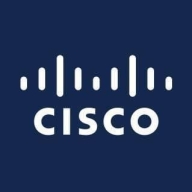
![Threat Stack Cloud Security Platform [EOL] Logo](https://images.peerspot.com/image/upload/c_scale,dpr_3.0,f_auto,q_100,w_64/o0no0it6ybl6satjcxomcblsgmd6.png?_a=BACAGSDL)
Cisco IOS Security and Threat Stack Cloud Security Platform compete in the security software market. Cisco IOS Security is favored for its networking capabilities and integration within Cisco ecosystems, particularly in enterprises with significant on-premise infrastructure.
Features: Cisco IOS Security provides firewall and VPN features, essential for securing network environments. It excels in network access control, protecting infrastructures through robust security measures. Threat Stack Cloud Security Platform focuses on cloud security, with features like intrusion detection and real-time alerts for comprehensive cloud protection. It provides security monitoring and advanced threat detection for cloud environments.
Room for Improvement: Cisco IOS Security needs enhancements in usability for newcomers and a modernized interface. Integration with non-Cisco systems can be challenging. There is room for improvement in automation features to match evolving market trends. Threat Stack Cloud Security Platform requires better customer support response, more user-friendly customization of alerts, and enhanced documentation for smoother user guidance.
Ease of Deployment and Customer Service: Cisco IOS Security integrates well in Cisco environments, providing easy deployment for familiar users. It offers comprehensive customer service, ideal for businesses utilizing Cisco frameworks. Threat Stack Cloud Security Platform allows straightforward deployment for cloud-focused organizations, supported by specialized customer service for cloud security needs.
Pricing and ROI: Cisco IOS Security has higher setup costs due to enterprise-grade features but promises significant ROI for traditional network infrastructures. Threat Stack Cloud Security Platform provides competitive pricing, emphasizing cloud security ROI, appealing to businesses prioritizing cloud environments. While Cisco offers integration value, Threat Stack benefits cloud-centric businesses with its cost-effective approach.
The return on investment is satisfactory with Cisco products as they have long lifespans, and our customers are satisfied with them.
My impression is that the support quality has deteriorated over time.
We find Cisco products stable and thoroughly tested before new software or firmware versions are released.
I find Cisco IOS Security to be a very stable product.
Cisco changes their licensing policy quite frequently, which is becoming confusing and complicated.
The cost of Cisco IOS Security for customers is on the higher end of pricing compared to the competition, depending on the targeted customers.
There are higher-level systems such as intrusion prevention systems which detect intrusions within the system.
This solution, called Network Access Controller, handles authentication, authorization, and accounting for devices accessing the network.

| Company Size | Count |
|---|---|
| Small Business | 20 |
| Midsize Enterprise | 14 |
| Large Enterprise | 18 |
| Company Size | Count |
|---|---|
| Small Business | 2 |
| Midsize Enterprise | 5 |
| Large Enterprise | 2 |
Threat Stack Cloud Security Platform [EOL] offers robust security features including endpoint monitoring, rule customization, and integration capabilities, with easy connectivity to cloud services like Docker and AWS.
Threat Stack Cloud Security Platform [EOL] provides tools for enhancing security visibility across cloud infrastructure. It supports AWS and Docker integration, facilitating efficient threat detection and management. Users appreciate its capability to configure customizable alerts and monitor endpoints, sessions, API interactions, and cloud services. However, there are areas needing improvement, such as better serverless environment support and reduced alert frequency. The platform services smaller organizations by compensating for limited security resources with its comprehensive monitoring and auditing tools.
What are the key features?In specific industries, Threat Stack Cloud Security Platform [EOL] is utilized for its strength in monitoring cloud infrastructure and preventing unauthorized access. Organizations in fields where cloud operations are critical use it for regular audits and monitoring. Its capabilities in threat management are leveraged to maintain secure operations and compliance, especially where there is no dedicated security team.
We monitor all Intrusion Detection and Prevention Software (IDPS) reviews to prevent fraudulent reviews and keep review quality high. We do not post reviews by company employees or direct competitors. We validate each review for authenticity via cross-reference with LinkedIn, and personal follow-up with the reviewer when necessary.